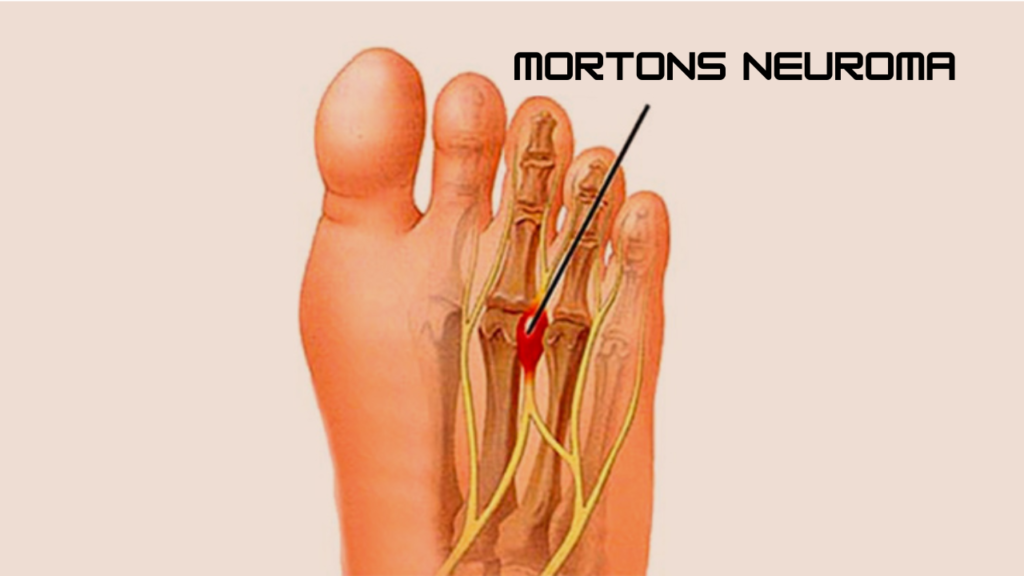Mortons Neuroma
Morton’s neuroma is a painful condition that affects the ball of the foot, typically between the third and fourth toes. It occurs when a nerve in the foot becomes compressed or inflamed, causing pain, numbness, and tingling in the affected area.
The exact cause of Morton’s neuroma is not well understood, but it is often associated with wearing tight-fitting shoes or high heels, as well as participating in high-impact activities like running or jumping. People with certain foot deformities, such as flat feet or high arches, may also be more prone to developing Morton’s neuroma.
Symptoms of Morton’s neuroma may include pain, numbness, tingling, or a burning sensation in the ball of the foot or toes. The pain may be sharp or dull and may worsen with activity or wearing certain types of shoes.
Treatment for Morton’s neuroma may involve a combination of conservative measures and more invasive treatments, depending on the severity of the condition. Conservative treatments may include changing footwear to shoes with a wider toe box or lower heel, using orthotic inserts or padding to relieve pressure on the affected area, and taking over-the-counter pain relievers.
In more severe cases, corticosteroid injections may be used to reduce inflammation and pain. In rare cases, surgery may be necessary to remove the affected nerve or relieve pressure on it.
Preventing Morton’s neuroma involves wearing properly fitting shoes with a wide toe box and low heel, as well as avoiding high-impact activities that can place excessive pressure on the feet. Maintaining a healthy weight and practicing good foot hygiene can also help prevent the development of Morton’s neuroma.
If you suspect you have Morton’s neuroma or are experiencing foot pain or discomfort, it is important to see a podiatrist for an evaluation. They can diagnose the condition and provide appropriate treatment options to relieve pain and prevent further damage to the foot.
If you would like to get seen by our board-certified foot and ankle specialists, click here

